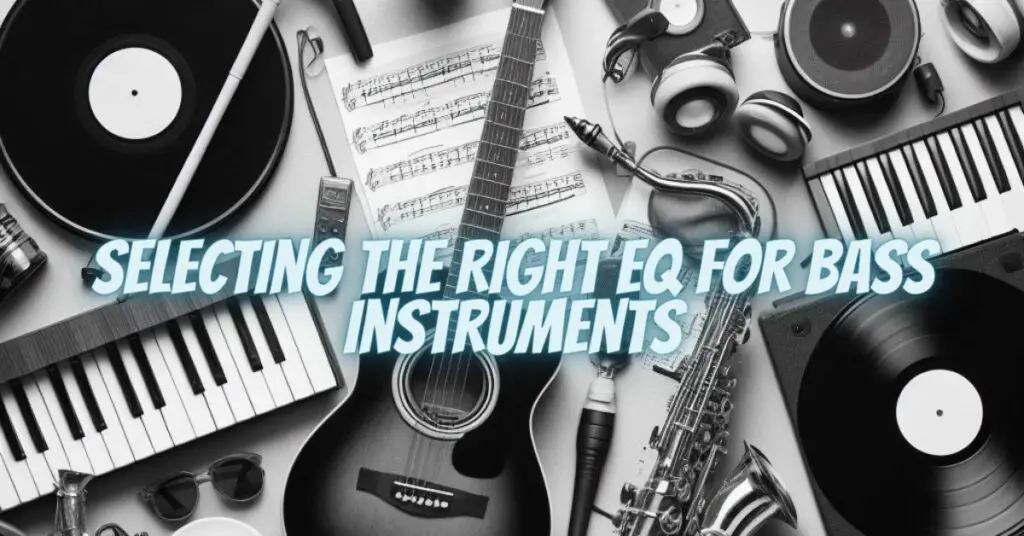Equalization (EQ) is a crucial tool for shaping the sound of audio signals, and when it comes to bass frequencies, selecting the right EQ is essential for achieving powerful, well-defined low-end audio. In this article, we will explore the different types of EQs and provide insights into choosing the ideal EQ for mastering bass frequencies in your audio productions.
Understanding Bass EQ Requirements
Bass frequencies, typically ranging from about 20Hz to 200Hz, play a fundamental role in audio production. They provide the foundation for music, adding depth, warmth, and punch to the sound. Effective bass equalization is essential for achieving the desired balance and impact in your audio.
Choosing the Right EQ for Bass
Several types of EQs can be effective for managing bass frequencies, depending on the application:
1. Parametric Equalizer:
Parametric EQs offer precise control over specific frequency bands, allowing you to adjust the center frequency, bandwidth (Q), and gain. This level of control is especially useful when sculpting bass frequencies.
Best Use: Parametric EQs are ideal for correcting issues or enhancing specific aspects of the bass, whether you need to address resonances or add punch and warmth.
2. Graphic Equalizer:
Graphic EQs feature multiple sliders, each corresponding to a specific frequency band. They are easy to use and are effective for broad tonal adjustments in the bass range.
Best Use: Graphic EQs are suitable when you need quick and straightforward adjustments to the bass, making them useful for live sound and general tonal shaping.
3. Shelving Equalizer:
Shelving EQs are designed to boost or cut all frequencies above or below a particular point. High-shelf EQs can be used to enhance high bass frequencies.
Best Use: High-shelf EQs are effective for adding warmth and punch to the upper bass range, bringing out the character of instruments and vocals.
4. Dynamic Equalizer:
Dynamic equalizers combine the attributes of EQ and compression. They automatically adjust EQ settings based on the incoming audio signal. Dynamic EQs are useful for managing problematic bass frequencies that fluctuate over time.
Best Use: Dynamic EQs are beneficial for live sound applications and post-production work, especially when dealing with resonances and dynamic bass content.
5. Paragraphic Equalizer:
Paragraphic EQs are a hybrid of graphic and parametric EQs. They offer fixed frequency bands like a graphic EQ but provide control over parameters such as bandwidth and gain.
Best Use: Paragraphic EQs offer versatility and are suitable for various situations, including live sound reinforcement and studio work.
6. Linear Phase Equalizer:
Linear phase equalizers aim to maintain the phase relationships of audio frequencies. They are often used in high-end mastering and audio processing to prevent phase distortion.
Best Use: Linear phase equalizers are ideal when maintaining the natural phase relationships between bass frequencies is critical, especially in critical audio mastering.
Choosing the Right EQ for Your Bass Needs
Selecting the best EQ for bass depends on your specific requirements, preferences, and the context of your audio work. If you require precision and control, parametric EQs are the preferred choice. Graphic EQs are practical for quick adjustments, while high-shelf EQs add warmth and punch. Dynamic EQs are excellent for managing dynamic bass content, and paragraphic EQs offer versatility.
Remember that combining different EQ types in your audio processing chain can lead to the best results. Experiment with your EQ settings and actively listen to the output to ensure you’re shaping the bass frequencies to achieve the desired sonic outcome.


